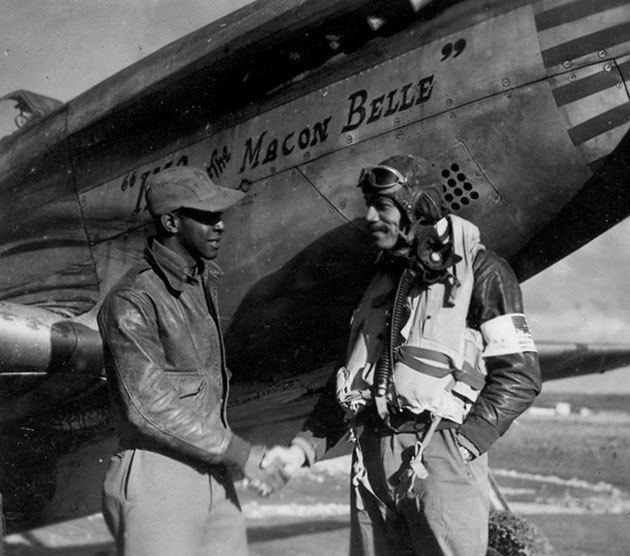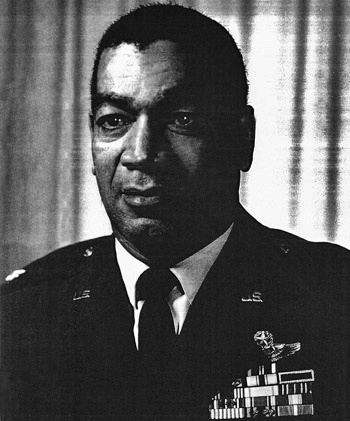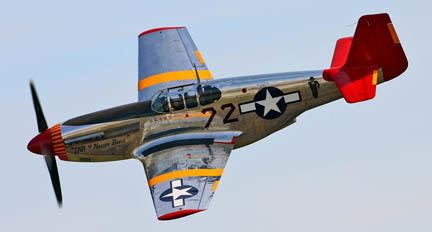Nickname(s) Buddy Name Lee Archer Allegiance United States Role Pilot | Years of service 1941–1970 | |
 | ||
Born September 6, 1919Yonkers, New York, United States ( 1919-09-06 ) Battles/wars World War IIKorean War Awards Air Force Distinguished Service MedalDistinguished Flying CrossAir Medal (18 clusters)Distinguished Unit CitationCongressional Gold Medal Books Panzerwrecks 14: Ostfront 2, Panzerwrecks 9: Italy 1, Panzerwrecks, Panzerwrecks 11: Normand, Ricin!: The Inside Story of th | ||
Lee archer ace pilot record
Lee Andrew Archer, Jr. (September 6, 1919 – January 27, 2010) was a African-American fighter pilot in the African-American unit which became known as the Tuskegee Airmen. He was one of the first African-American military aviators in the United States Army Air Corps, the United States Army Air Forces and later the U.S. Air Force, eventually earning the rank of lieutenant colonel.
Contents
- Lee archer ace pilot record
- Lee archer becoming a military pilot against the odds cpt program
- Early life
- World War II
- Later career
- Illness and death
- Military awards
- Other honors
- References

During World War II, Archer flew 169 combat missions, including bomber escort, reconnaissance and ground attack, and is officially credited with 4.5 enemy fighter aircraft shot down.

Lee archer becoming a military pilot against the odds cpt program
Early life

Born in Yonkers, New York, Archer grew up in New York's Harlem district, later attending New York University. Upon graduation, he joined the Army in the hopes of becoming a pilot. At that time, the Army did not accept black pilots, so Archer was posted to a communications job as a telegrapher and field network-communications specialist in Georgia. When the Army's policy changed, he was accepted to the training program for black aviators at Tuskegee Army Airfield in Alabama, graduating first in his class, and one of only 994 black wartime pilots to graduate there. He was commissioned as a second lieutenant on July 28, 1943.
World War II

Archer is considered by some as the first and—as of 2010—only black U.S. pilot to earn an "ace" designation, for shooting down at least five enemy aircraft. Archer was acknowledged to have shot down four planes, and he and another pilot both claimed victory for shooting down a fifth aircraft. An investigation revealed Archer had inflicted the damage that destroyed the aircraft, and the Air Force eventually proclaimed him an ace pilot. He also destroyed six aircraft on the ground during a strafing mission in August 1944, as well as several locomotives, motor transports and barges.
While flying with the 302nd Fighter Squadron, as a combat pilot, nicknamed "Buddy", Archer flew 169 combat missions in the European Theatre of World War II, flying the Bell P-39 Airacobra, Republic P-47 Thunderbolt and North American P-51 Mustang fighter aircraft. Flying a P-51C fighter with the distinctive red tail of the 332nd Fighter Group, known collectively as the "Tuskegee Airmen", he scored his first victory, a Messerschmitt Bf 109 on July 18, 1944 over Memmingen, Germany.
Archer is best remembered for his exploits of October 12, 1944. In the midst of a furious series of dogfights over German-occupied Hungary, he shot down three Hungarian Bf 109s over Lake Balaton, Hungary, in engagements that spanned only 10 minutes.
The claim that Lee Archer scored, in addition to his awarded victory on July 18, 1944, an additional victory or half a victory that day has been disputed by US Air Force historian Daniel L. Haulman. According to the group history and Fifteenth Air Force mission reports, Archer claimed and was awarded a credit on July 18, 1944, and did not share an additional victory with anyone else. The pilot with whom Archer is sometimes said to have shared the credit, Freddie Hutchins, did not earn an aerial victory credit or a half aerial victory on that particular day. No other pilot in Archer's squadron or group earned a half credit that day. Archer's next three victories occurred on a single mission in October 1944.
Frank Olynyk, an historian for the American Fighter Aces Association, also acknowledged that while the organization named Archer as an honorary ace, he was not named an official ace due to the fact he was unable to produce any record confirming he shot down five planes. According to Olynyk, Archer never alleged that he shot down five planes and that the claim originated after his last name was mistaken with that of another Tuskegee pilot with the last name "Arthur." However, Olynyk also acknowledged that Archer did believe he shared an additional victory with another pilot and the official combat record which could have confirmed this was stolen from his car shortly after he returned home when the war ended.
When Archer returned home in 1945, a recipient of the Distinguished Flying Cross, he found that nothing seemed to have changed in American society. "I flew 169 combat missions when most pilots were flying 50," Archer told the Chicago Tribune in 2004. "When I came back to the U.S. and down that gangplank, there was a sign at the bottom: ′Colored Troops to the Right, White Troops to the Left′."
Archer remained in the armed forces for a career as the U.S. Army Air Forces transitioned into the present day U.S. Air Force in 1947. He later flew missions during the Korean War, became a diplomatic officer at Supreme Headquarters Allied Powers Europe (SHAPE) and then became the headquarters chief of the U.S. Air Force Southern Command in Panama, eventually retiring as a lieutenant colonel in 1970.
Later career
After retiring from the military, Archer joined General Foods Corporation in White Plains, N.Y. where he became one of the first black corporate vice presidents of a major U.S. company. While there he also led its small-business investment subsidiary, North Street Capital Corporation, which serviced clients such as Essence Communications and Black Enterprise Magazine. In 1987 he helped establish the food conglomerate TLC Beatrice and in the same year founded the venture capital firm Archer Asset Management. Archer became a longtime resident of New Rochelle, New York.
In October 2005, Archer and two fellow Tuskegee veterans, retired Technical Sergeant George Watson Sr. and Master Sergeant James A. Shepherd, visited Balad Air Base at Balad, Iraq, to meet with 700 servicemen from the 332nd Air Expeditionary Wing, the successor unit to his all-black outfit.
"This is the new Air Force," he told The Associated Press. In the dining room, he said, he saw "black, white, Asian, Pacific Islanders, people from different parts of Europe. This," he said, "is what America is."
Illness and death
In April 2009, Archer was selected to be an adviser for the George Lucas produced film, Red Tails. Archer, aged 90, died at Cornell University Medical Center in New York City on January 27, 2010, as a result of coronary complications, according to his son Roy Archer. His death came during the post-production work on the Lucas film Red Tails, and the film's final credits subsequently bore a tribute to the pilot. At a memorial service for Archer held at the Riverside Church on February 4, entertainer and commentator Bill Cosby gave a eulogy.
Archer was predeceased by his wife, Ina Burdell, who died in 1996 and was survived by his three sons, one daughter and four granddaughters. He is buried at Arlington National Cemetery.
Military awards
Source -
